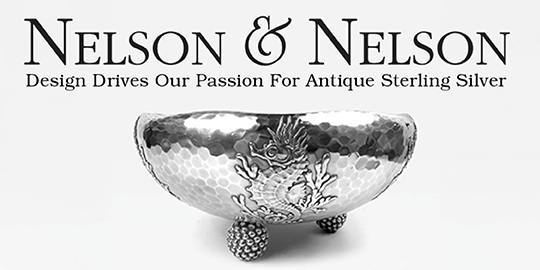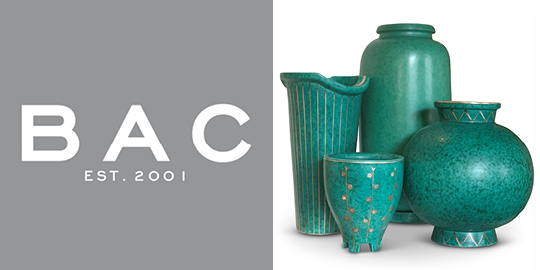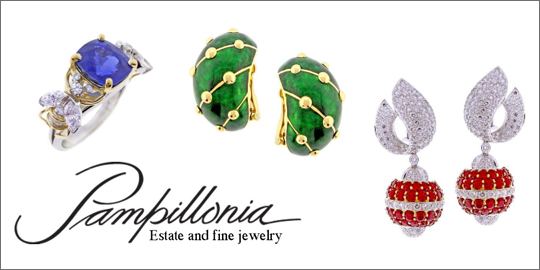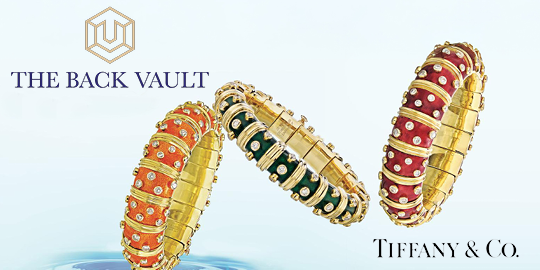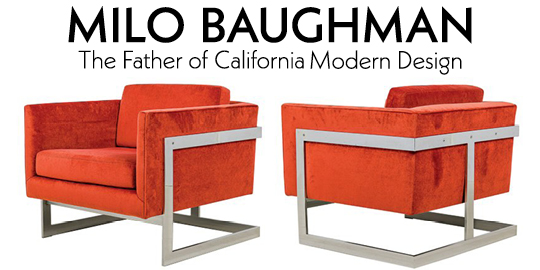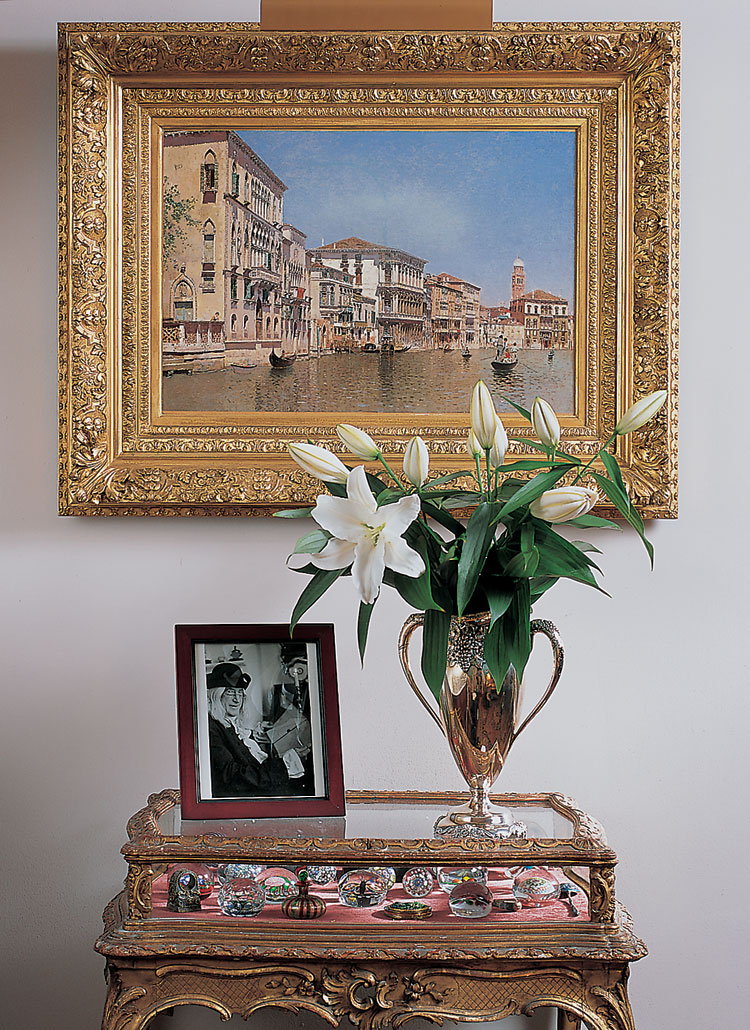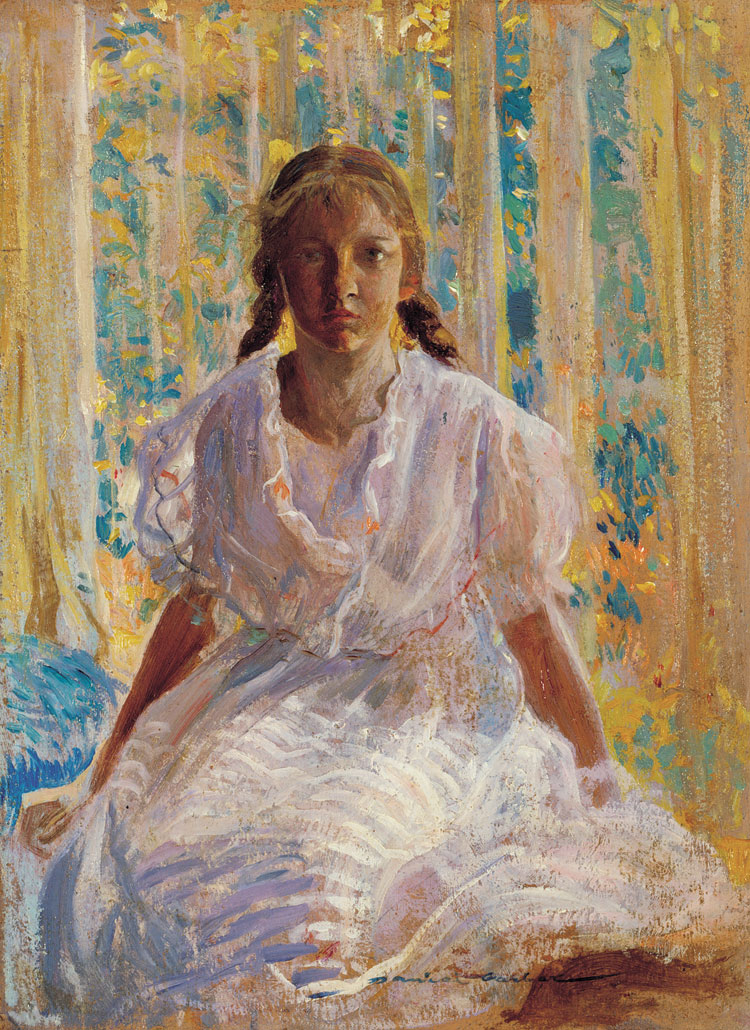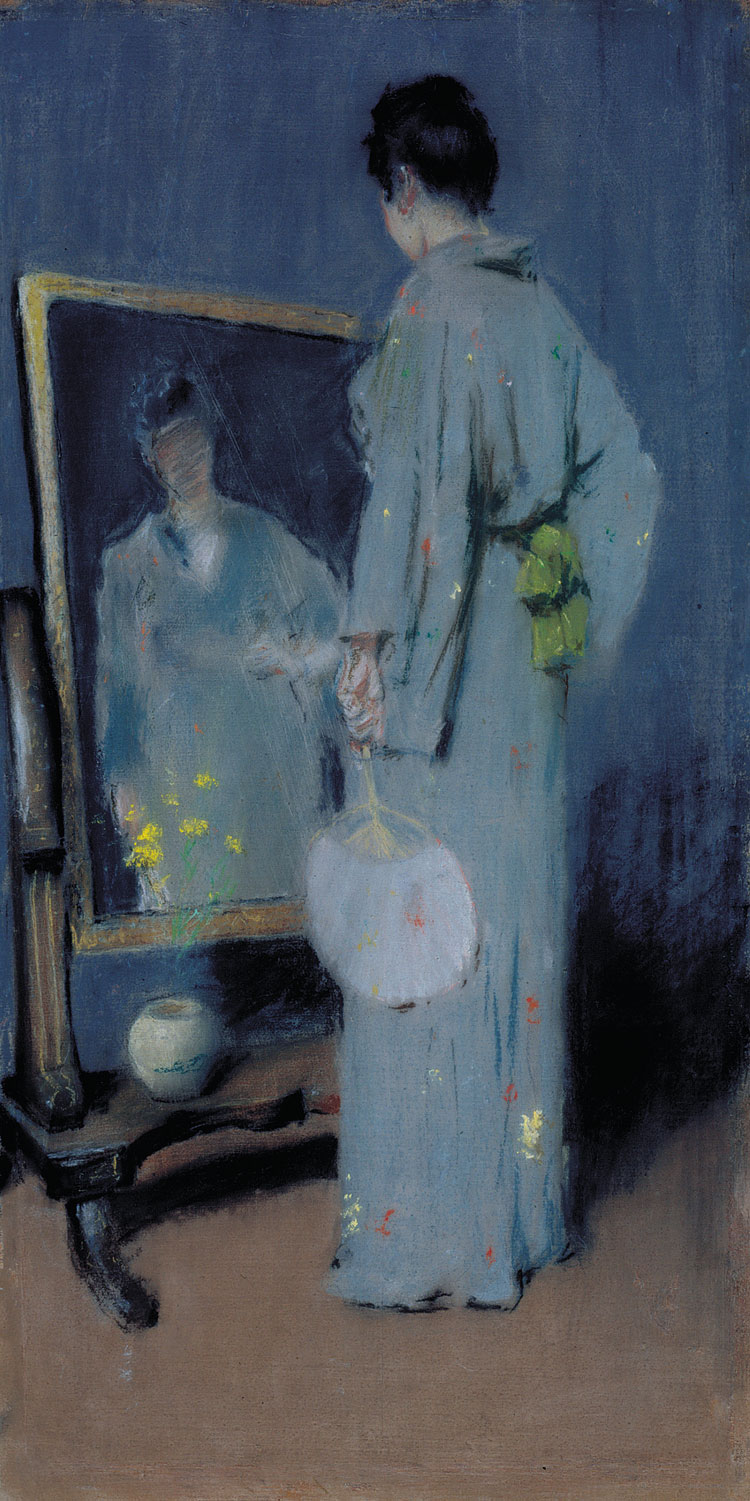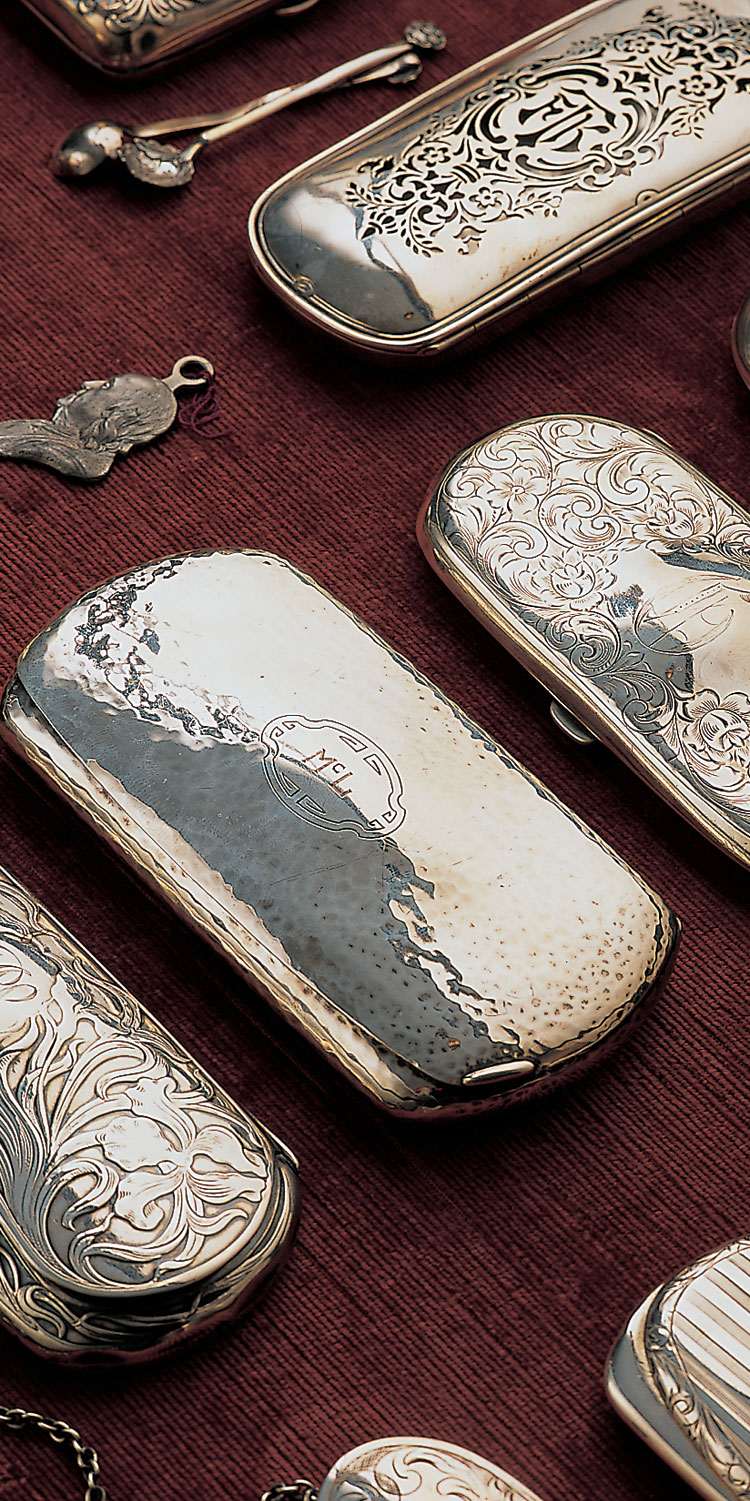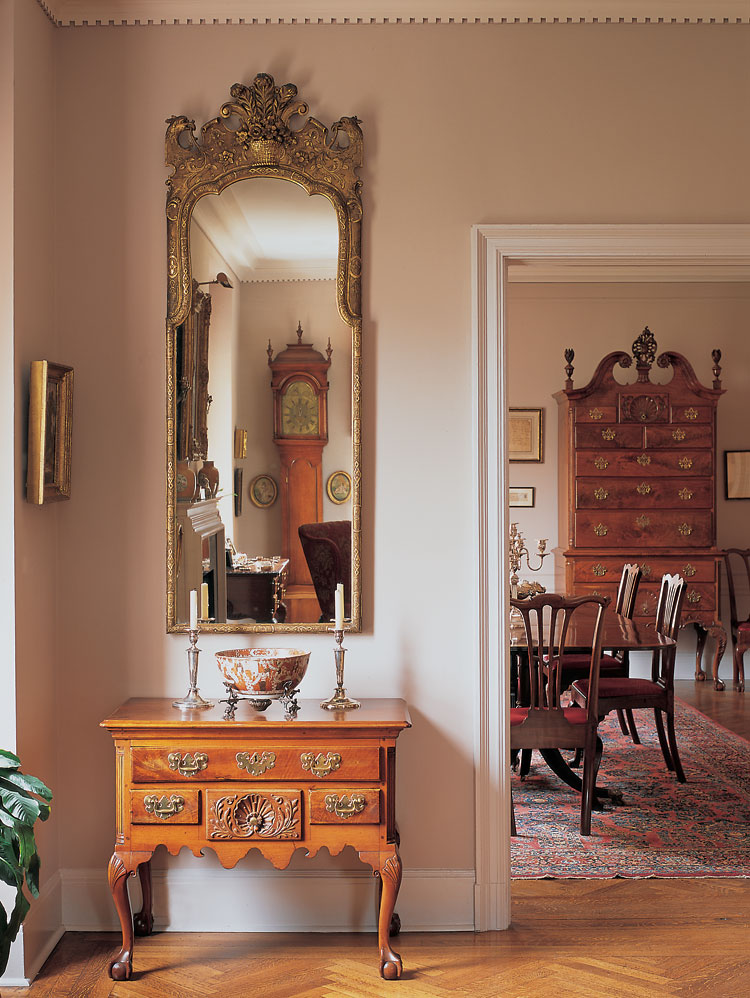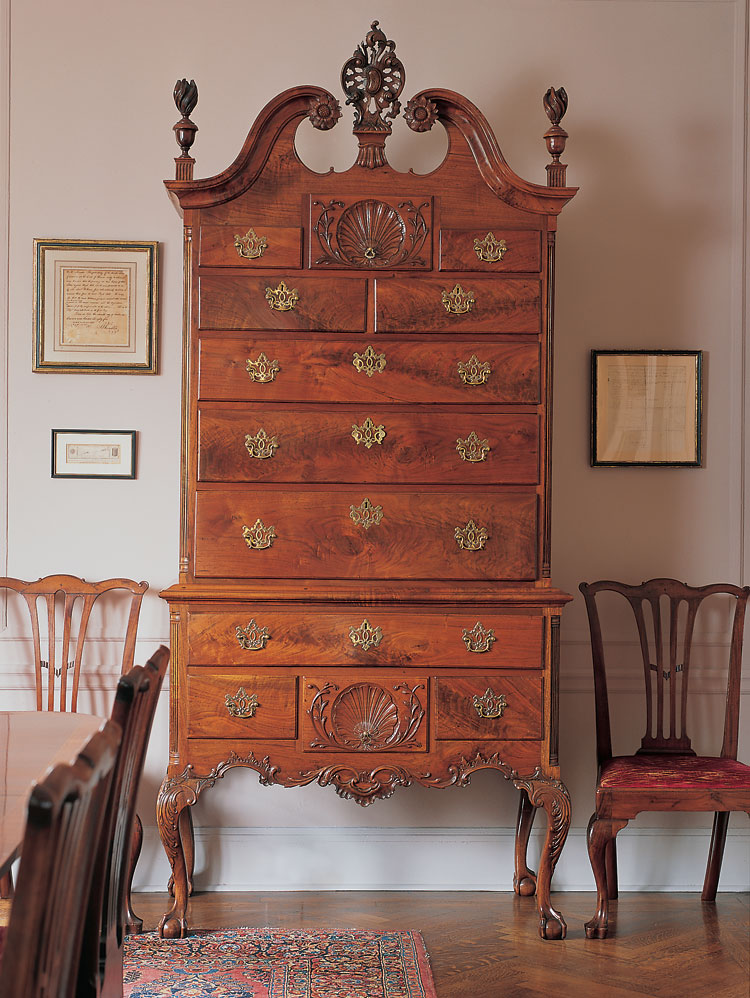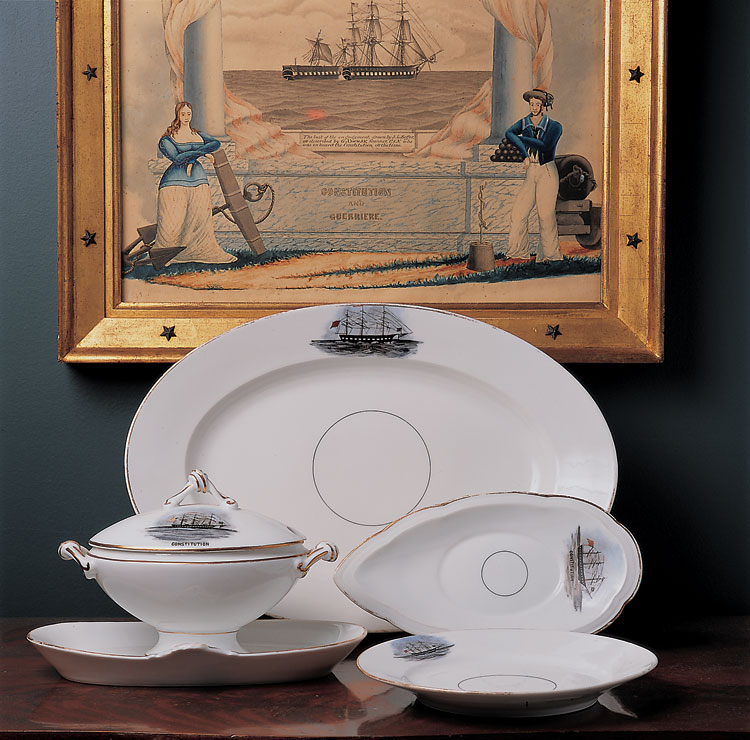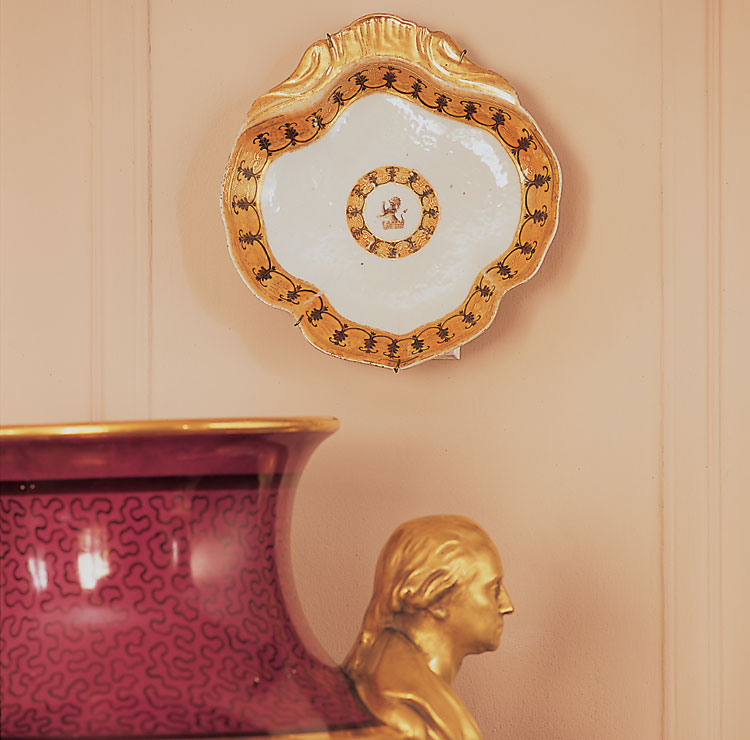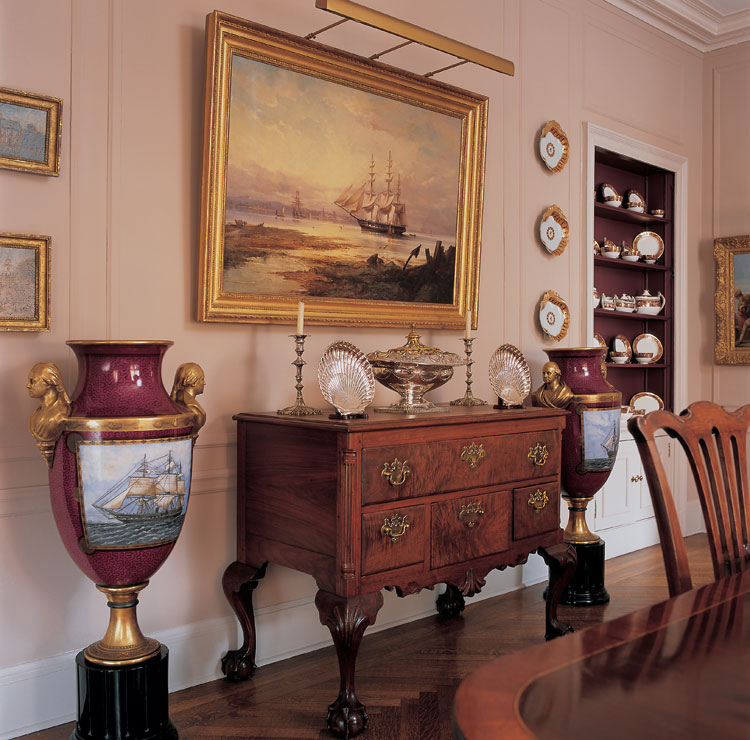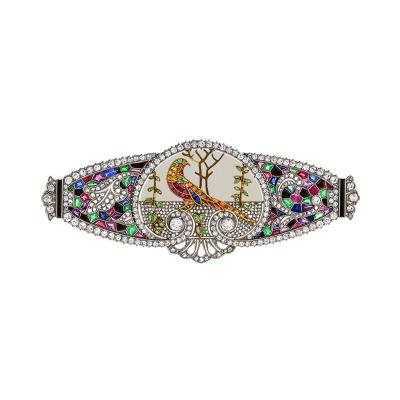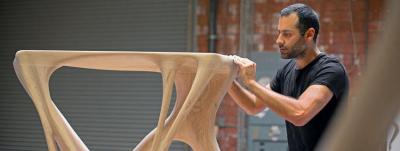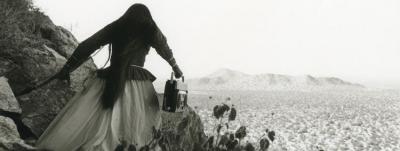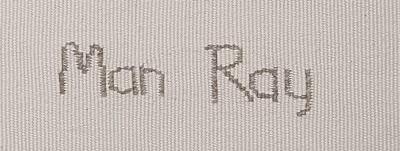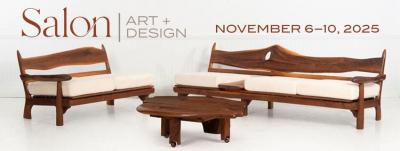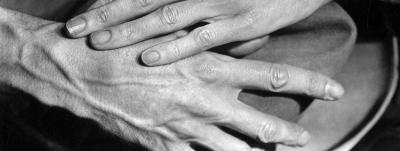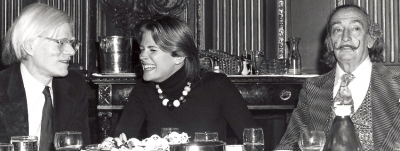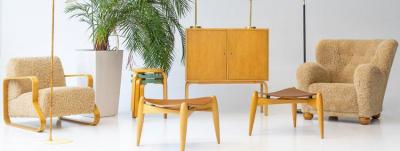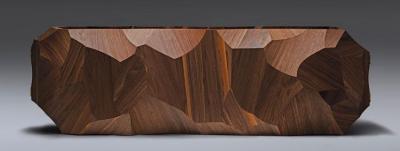Pursuing Art for Three Generations
In 1940, when she married Frank S. Schwarz, Marie Devlin found that she had taken more than a husband—she had partnered with an inveterate collector of antiques, a man whose passionate pursuit of (and thriving business in) furniture, silver, objets d’art, and paperweights had happened accidentally, almost serendipitously.
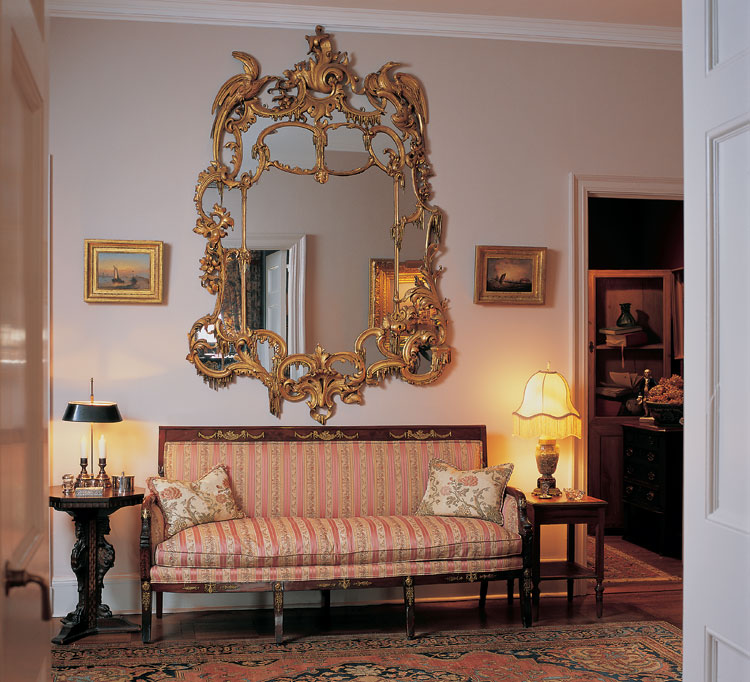
- With ornate open work and asymmetric English hand-carving, the imposing 6 foot by 4 foot Chippendale-style, circa-1850 mirror dominates the foyer. An 1810 French Empire sofa, with brass ornaments and dolphin carving on its arms, upholstered in pink striped fabric, rests on a circa 1880–1890 Persian wool, rose, and dark blue, rug with medallion center. Two Max Eglau (American, 1825–1900) oils, Coming Ashore, and Castle Garden with Sailboats and Steamers, hang above the sofa, lit by a 1920 jade lamp with teak and brass stand.
Frank Schwarz was initially intent on becoming a lawyer. He had earned a degree from University of Pennsylvania’s Wharton School, and was completing his second year of law school when, in June 1930, on the cusp of the Great Depression, his father, Jacob, announced his intention to divest a large part of his monumental collection of antiquities. Frank offered to assist, and immediately rented a southern New Jersey farmhouse just north of the Seaview Country Club on Rte. 9, the primary route from New York to Cape May, where he hoped to attract buyers. Success came quickly, and Frank decided not to return to school. By September he had moved his shop to the boardwalk at Atlantic City, eventually winding up on its most prestigious block, in front of the Traymore and Brighton Hotels, where he remained until 1942.
In the Schwarz Gallery’s catalogue Fifty Years on Chestnut Street (1993), Frank’s son, the late Robert D. Schwarz, wrote that the shop was immediately triumphant, with patrons like U.S. Chief Justice Owen Roberts, tobacco heiress Mrs. Bowman Gray, and even Evelyn Walsh McLean. “Mrs. McLean visited the shop wearing the Hope diamond,” Robert recalled, “and not one to do things on a small scale, she began her famous paperweight collection by purchasing Schwarz’s entire stock of five ‘Jersey roses,’ as well as assorted French paperweights!”
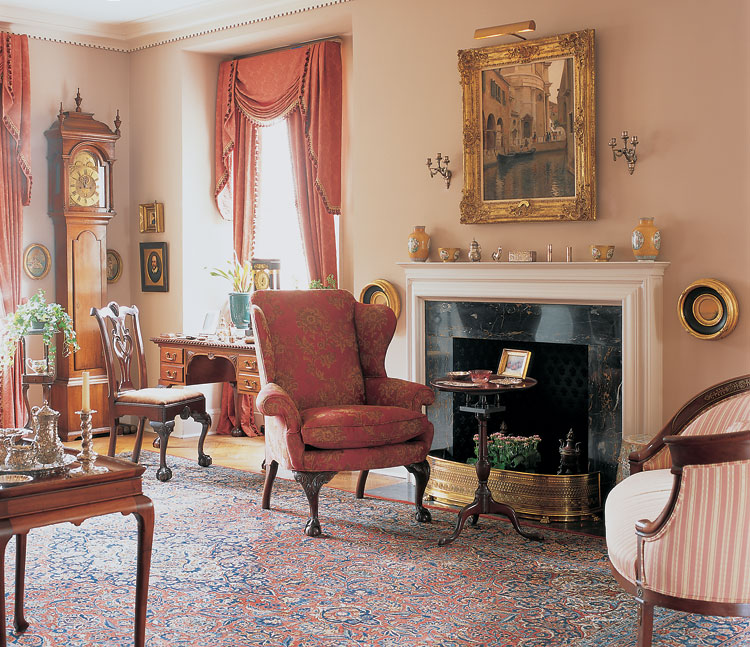
- One of Marie’s most treasured oils is Julius L. Stewart’s (American, 1855–1920) 1908 Italian cityscape Rio della Maddalena. She has placed it prominently above the living room fireplace. The medallion on the rare Pennsylvania 8-day tall case clock with hour strike is inscribed: “David Rittenhouse, Norriton, 1769.” While clockmakers do not traditionally date their work, that year saw a transit of Venus, carefully kept track of by astronomers, and Rittenhouse was actively making clocks to enable his customers to time the transit. The dial, weights, and pendulum all appear to be original, which is quite unusual.
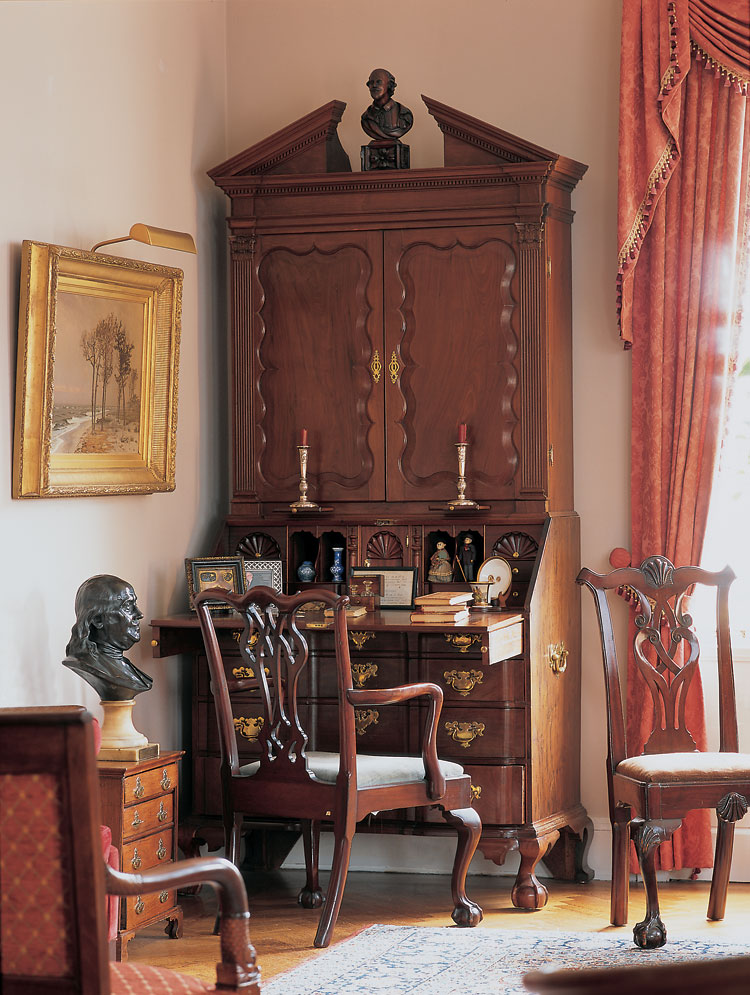
- One corner of the living room reminds Marie that “Even though I was not a big furniture and art collector I was married to an antique dealer and my son was an art connoisseur.” In this area are a circa-1770 American mahogany block-front secretary with mounted bust of Shakespeare; a 1900 bronze bust on marble plinth of Benjamin Franklin, sculpted after Jean Antoine Houdon (French, 1741-1828), inscribed “Houdon f. 1778,” which resides on an 1810 miniature chest; a Chippendale ball and claw foot armchair; and a centennial Philadelphia open-back, needlepoint side chair. Seen here, William Trost Richards’ (American, 1833–1905) 1870 New Jersey Shore, on loan to Marie before being included in the Schwarz Gallery New Jersey Remembered: 75th Anniversary catalogue, has since been returned to the gallery.
In love with “the hunt,” Frank began filling the home that he and Marie shared after their marriage. “The collection just happened!” Marie laughs. “Frank would be out, and he’d see something he thought we could use. We had a good sized house and were buying only antique furniture. We bought what we liked, what we could use, and we never had to replace pieces; the only time we changed anything was, occasionally, to upgrade.” And of course Frank liked Philadelphia pieces; he had been born and raised in that city. “We bought a Duffield clock and a slant-lid desk; two of our first purchases,” she recalls, “and my father-in-law gave us a Queen Anne highboy.” Marie adds, “I wasn’t a scholarly collector and didn’t buy much before I got married. Later on I began finding small pieces of silver and objets d’art, especially eyeglass cases—I suppose I was drawn to them because my father was an optometrist.”
Marie remembers that in the 1940s, 50s, and early 60s, the interest in period American furniture was not as intense as it was to become. Much of the trading at large antique shows was among dealers. The Schwarzes were able to purchase entire estates from Philadelphia’s mainline families, whose children sold what they inherited, preferring new to old. Legendary early American dealers Joe Kindig, David Stockwell, Ben Ginsburg, and Israel Sack were regular visitors at Frank’s store. “It seemed that the well would never run dry,” says Marie.
As their family grew, the Schwarzes moved to a three-story, five bedroom turn-of-the-century home in Overbrook, where they accumulated more of Frank’s “finds.” Eventually, they emptied a good portion of their belongings into three floors above what was, by then, known as the Schwarz Gallery on Philadelphia’s Chestnut Street off Rittenhouse Square, and took up residence there.
In the early 1950s, Frank bought a group of nineteenth-century paintings and sculpture, part of the Rush collection sold by the Library Company of Philadelphia when they moved location. Nineteenth-century art was “out of fashion” and had a very limited market (until the 1960s and Jacqueline Kennedy’s renovation of the White House, which kindled new interest in antiques in general and American antiques in particular). The paintings were stored in a basement until Marie and Frank’s son Robert, fascinated with them, had them cleaned, restored, and framed. In 1964, Robert joined the firm as his father transitioned to retirement because of illness. Robert took advantage of the ascending art market and changed the gallery’s focus to nineteenth-century American painting masterpieces. He also offered earlier works by the renowned Peale family.
Frank and Robert are both gone, and grandson Robert Jr. now runs The Schwarz Gallery, along with Marie, who says that the working arrangement is similar to what it has been all along, with Marie available at the gallery. “My husband never took me on calls; he wanted me running the store. He would focus on the major collectors at their homes and I would work with walk-in customers. I was more of a chatterer so the arrangement suited me fine. We worked well together!”
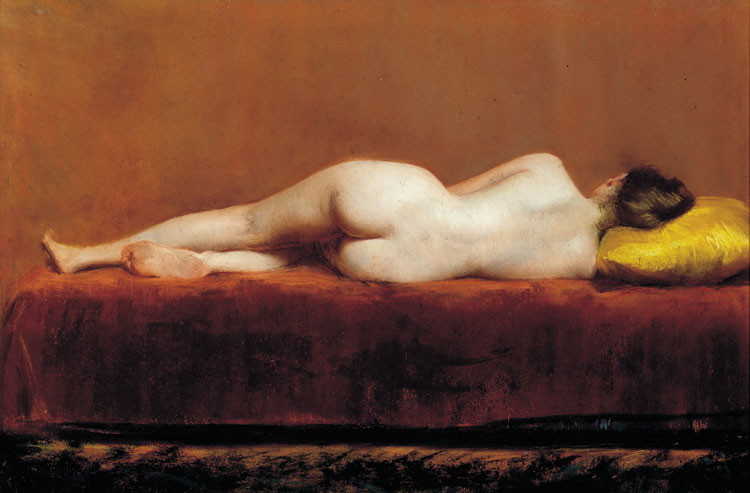
- William Merritt Chase (American, 1849–1916), Nude Recumbent, ca. 1888. Pastel on paper. 13-7/8 x 20-7/8 inches. This image came from Anthony Wayne Ridgeway of Philadelphia. Marie considers it one of her most important works; it is slated to appear in the 2006 Chase catalogue raisonné. Chase has been described by art historian Prudence Pfeiffer as the most influential plein air American artist working at the end of the nineteenth century.
When Marie left her Chestnut Street home for her present apartment overlooking Rittenhouse Square, her living quarters dwindled from three stories to one. Having just lost to retirement her close friend and housekeeper of fifty years, it is a daunting task to maintain and preserve the huge collection in what she calls “a lot of apartment.” To make her feel more at home, Robert, Jr. brought paintings over from the gallery, with many on permanent loan today. But while Marie has the privilege of living with wonderful objects and paintings, she says “I am no longer collecting. I have to start the reverse!”
And what of the next generation of Schwarzes? Have they inherited the chromosomal love for the old and venerable? When Marie recently found her grandson Tim sitting in one of her Chippendale chairs, looking stiff and uncomfortable, she asked “Tim, are you okay?” “Yes,” he replied. “But, you know,” he added, referring to Marie’s New Jersey shore home, which contains almost no antiques or fine art, “I really like your beach house much better!” With time though, he and his young cousins are bound to discover the joys of art and antiques.
This article was originally published in the Autumn/Winter 2005 issue of Antiques & Fine Art, a digitized version of which is at afamag.com. AFA is affiliated with Incollect.com.







